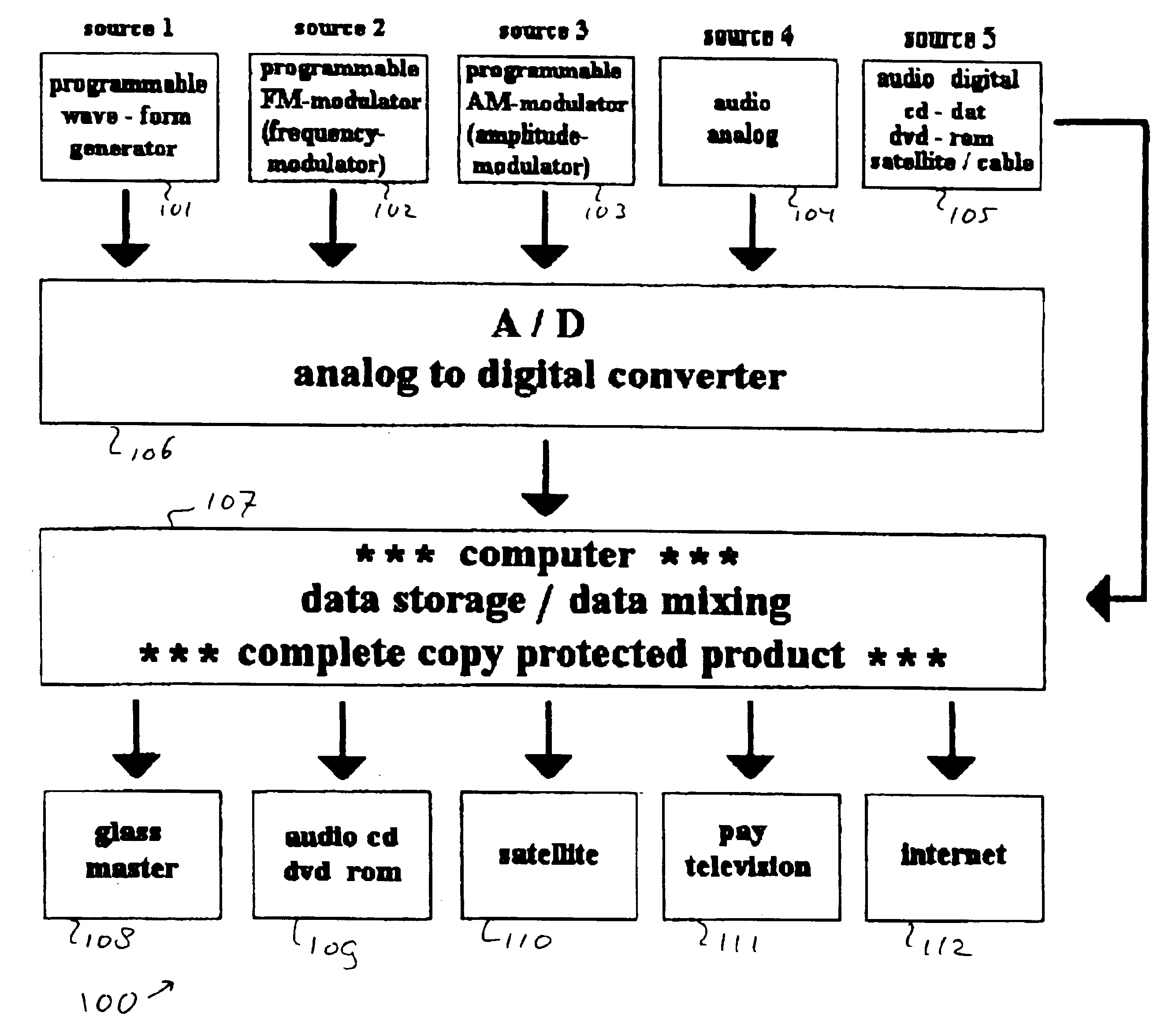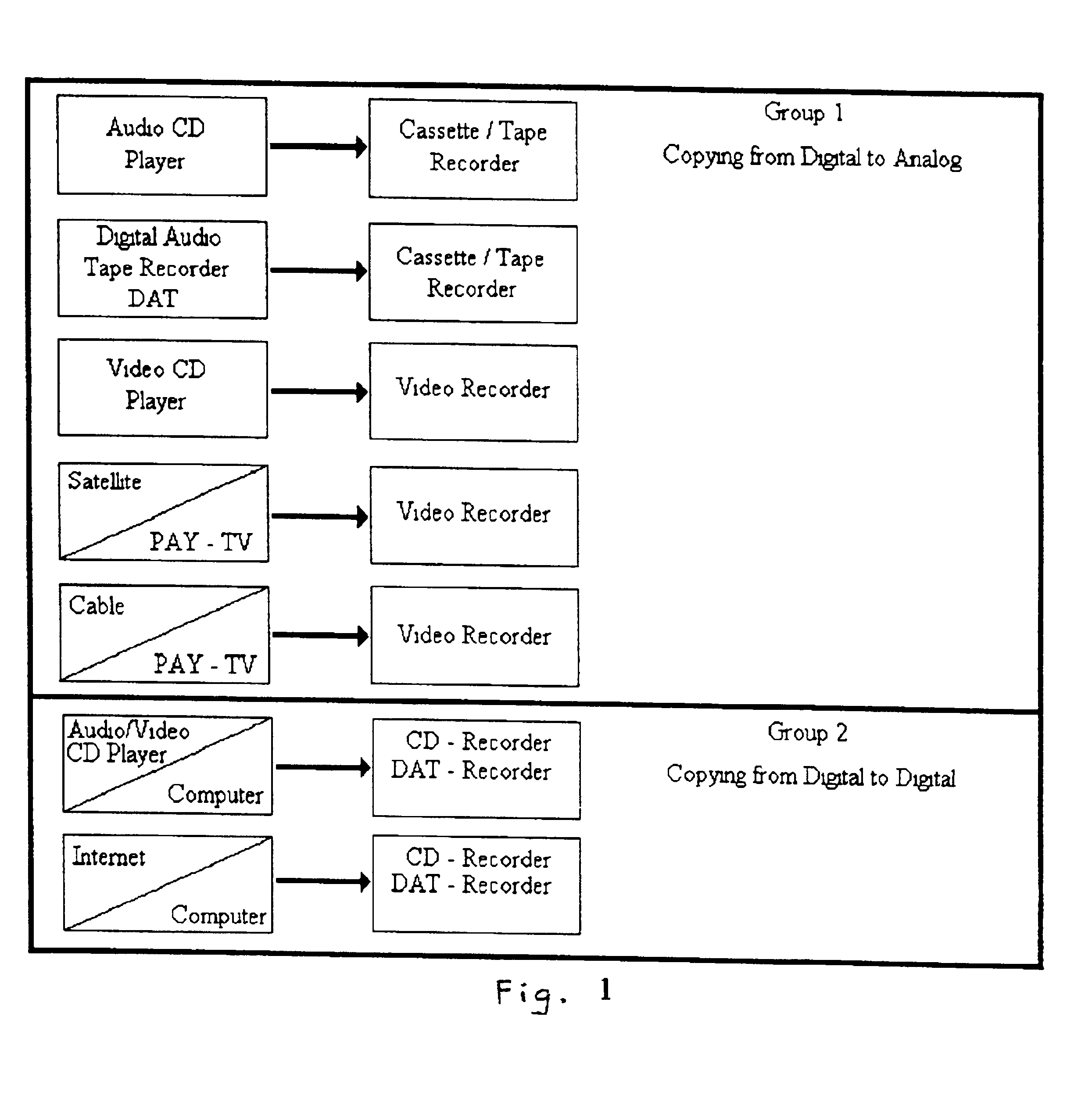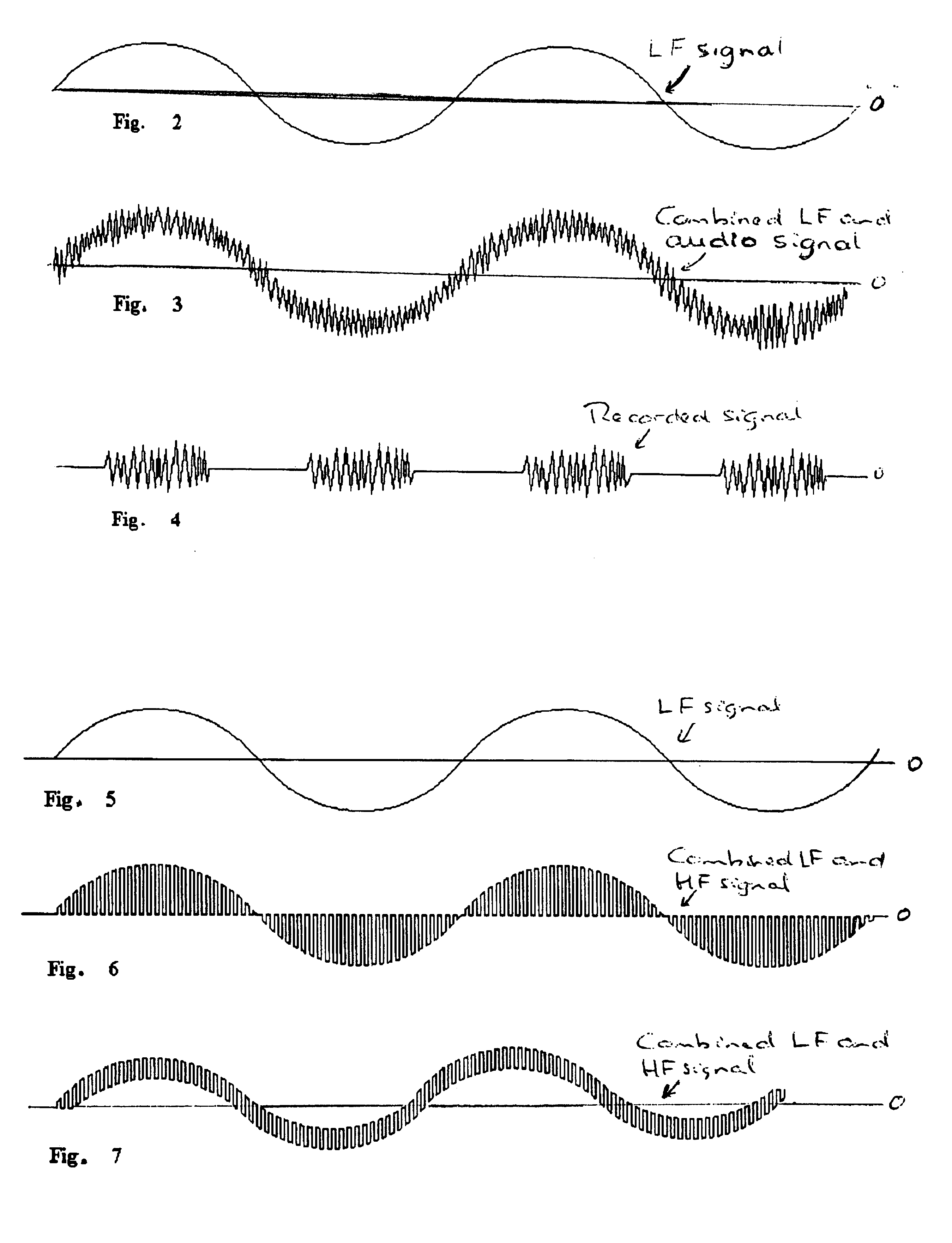Anti-copying system for audio signals
an anti-copying and audio signal technology, applied in the field of anti-copying systems for audio signals, can solve the problems of many illegal copies of cds or other information carriers, substantial loss of copyright royalties,
- Summary
- Abstract
- Description
- Claims
- Application Information
AI Technical Summary
Benefits of technology
Problems solved by technology
Method used
Image
Examples
Embodiment Construction
[0027]As shown in FIG. 1, the copying of (digital) audio signals may be considered to involve two categories or groups of copying operations:[0028]Group 1: from digital to analog signals, and[0029]Group 2: from digital to digital signals.
Although some of the techniques described in this document may also apply to copying from analog to analog signals (signal representations), the following discussion will focus on the copying of digital audio signals, that is audio signals registered in a digital representation (sampled audio signals represented digitally by ones and zeros).
[0030]Especially group 2 poses problems with respect to copyright, as the CD-burners and DAT-recorders normally allow perfect copies of the original signals to be made (it will be understood that so-called DAT-recorders are tape / cassette recorders which digitally register audio signals on tape).
[0031]According to a first aspect of the present invention, a low-frequency disturbance signal (also called first distur...
PUM
| Property | Measurement | Unit |
|---|---|---|
| frequency | aaaaa | aaaaa |
| frequency | aaaaa | aaaaa |
| frequency | aaaaa | aaaaa |
Abstract
Description
Claims
Application Information
 Login to View More
Login to View More - R&D
- Intellectual Property
- Life Sciences
- Materials
- Tech Scout
- Unparalleled Data Quality
- Higher Quality Content
- 60% Fewer Hallucinations
Browse by: Latest US Patents, China's latest patents, Technical Efficacy Thesaurus, Application Domain, Technology Topic, Popular Technical Reports.
© 2025 PatSnap. All rights reserved.Legal|Privacy policy|Modern Slavery Act Transparency Statement|Sitemap|About US| Contact US: help@patsnap.com



